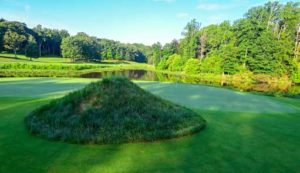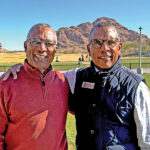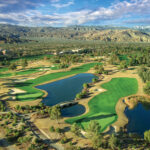The Preserve At Eisenhower
A Model For Sustainable Golf
 The recently completed full-scale renovation of The Preserve at Eisenhower Golf Course in Crownsville, Maryland, may very well serve as a model for the way sustainable design projects should be handled. Architect Andrew Green worked in close coordination with the Anne Arundel County Department of Public Works to create a magnificent golf course intertwined with a nature preserve. During the renovation every sand bunker was removed and replaced with strategic mounding topped with native grasses. Beautiful boardwalks span the routing’s streams allowing for wetlands to thrive and providing habitats for the course’s full-time residents. The au natural setting also allows players to experience what makes a round of golf truly wonderful.
The recently completed full-scale renovation of The Preserve at Eisenhower Golf Course in Crownsville, Maryland, may very well serve as a model for the way sustainable design projects should be handled. Architect Andrew Green worked in close coordination with the Anne Arundel County Department of Public Works to create a magnificent golf course intertwined with a nature preserve. During the renovation every sand bunker was removed and replaced with strategic mounding topped with native grasses. Beautiful boardwalks span the routing’s streams allowing for wetlands to thrive and providing habitats for the course’s full-time residents. The au natural setting also allows players to experience what makes a round of golf truly wonderful.
An historic golf course just outside of Annapolis, the renovation was designed to harmonize the course with land it sits on. The tee-to-green renovation was done in tandem with a stream restoration the Anne Arundel County Bureau of Watershed Protection and Restoration was planning, with the help of the U.S. Fish and Wildlife Service. Restoring the stream was a great opportunity to repair a headwater in a sensitive location near the Chesapeake Bay.
“In my first walk, I was blown away by the property itself,” Green said. “The ground is spectacular. It is as good as it gets. I’d say it’s probably some of the best golfing topography around.”
Consequently, “We did not move a lot of dirt. We really concentrated around the greens to make them more unique and interesting and have different challenges around the putting surfaces,” Green said.
The stream restoration project is intended to be self-sustaining, and once these projects get implemented nature will take over and maintain it for the future. Funds that were used in the restoration protect the land from future development, ensuring this remains green open space for generations.
Along the edges of the golf corridors invasive plants have been replaced with pollinators, and large boardwalks now span the restored Broad Creek and its new wetlands. Playing the walkable layout golfers get to experience the piece of ground the way nature intended.
NO SAND IN SIGHT
There are purists in the golfing industry who may say there’s no way every bunker should be removed from a course. But it’s something Green had been thinking about for a while.
“I’ve been thinking about the potential, what that would mean,” he said. “I’d actually spoken with another industry leader about the idea. We talked about is the golfing public ready to embrace a bunkerless course. And when I walked the (Preserve at Eisenhower) property the first time, it almost immediately hit me that this was the place to do it.”
Part of that, Green said, was understanding that he could elevate the quality of golf, the quality of the turf, the experience of the round, without putting a handicap on the maintenance staff, on the operation of the golf course. “Maintaining bunkers is incredibly expensive,” he said. “We found that it’s as expensive or more expensive than a square foot of green space, which is insane.”
At The Preserve at Eisenhower, Green used short grass, elevation variation, and fescue-covered strategic mounds to create the challenge without the sand. “You’re going to be just as fulfilled and challenged playing Eisenhower today without bunkers, than you would be if there was 50 bunkers or 100 bunkers,” he said. “The way we’ve used the topography, the shots you’re going to play, you’re not going to miss the sand, I guarantee it.”
The mounds aren’t repetitively rolling, but more irregular and strategically placed. Hit it inside of the ninth hole’s dogleg and you will find a hummock where you might expect a bunker. The awkward stance, tough lie, or mound to hit over can present a host of challenges. Miss even more, and you no longer need to spend time looking for the ball. The hazard line is there, the environmental area is on the other side, and that’s not a place to play golf — which helps pace of play.
“I’m hoping that (The Preserve at Eisenhower) can be kind of a model for municipal public courses that are looking to increase speed of play, reduce long term costs, and still have just an awesome golf experience,” Green said.
Amen to that. ▪





